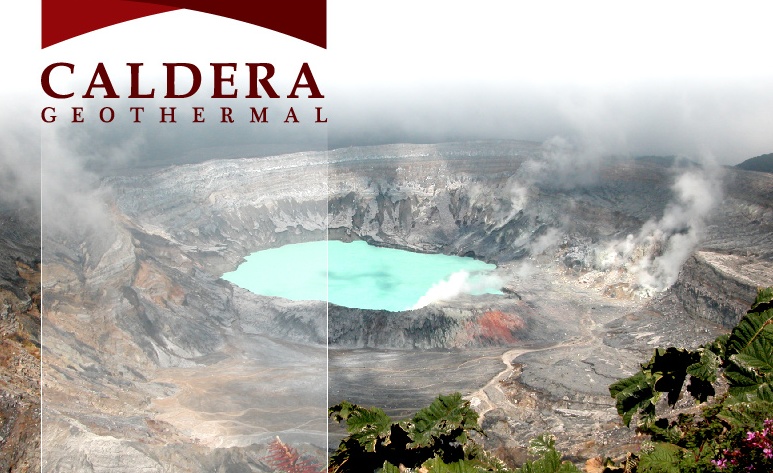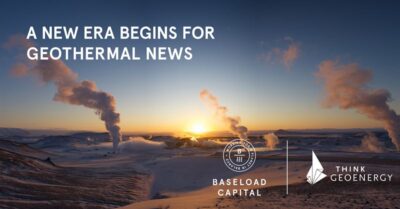Richard Zehner of Caldera Geothermal in interview
In an interview at EnergyBoom, the president and director of Canadian Caldera Geothermal, Richard Zehner (RZ) provides some details on the company.
In an interview at EnergyBoom, the president and director of Canadian Caldera Geothermal, Richard Zehner (RZ) provides some details on the company.
For the full text see interview at EnergyBoom, link below.
Richard Zehner (RZ): We started Caldera Geothermal because we noticed that no one else was searching for new geothermal discoveries. Everyone else is trying to explore and develop known geothermal systems. If you’re going to expand the resource base, you’ve got to find new systems.
Our “mission” includes finding and developing unexplored or under appreciated geothermal systems. This is a unique market niche in which we have first mover advantage, and probably more knowledge than other geothermal companies.
Robert Gluck of EnergyBoom (RG): According to your website, you were previously a Research Scientist at the Great Basin Center for Geothermal Energy, part of the University of Nevada, Reno and your work included publishing over 80 geothermal-related GIS layers to aid in grass roots exploration, many derived from data collected by UNR researchers. What can you tell us about grass roots exploration that is new and exciting? Any new published titles?
RZ: In the short time since we put Caldera Geothermal together, we have identified several promising new geothermal systems unknown to the geothermal community, and we are continuing to ramp up our exploration program. The Great Basin Center continues to put new data on their website.
RG: You assembled a groundwater geochemical database to target Great Basin geothermal systems and helped develop exploration tools such as the 2m thermal probe. What is interesting about the Great Basin to someone who has not heard of it?
RZ: The ‘Great Basin’ is that portion of the western U.S. where rainfall never makes it to the ocean, but drains into playas or salt lakes instead. This is because river drainages in the Great Basin have been disrupted by regional crustal extension. The place is being slowly pulled apart.
This has the effect of simultaneously thinning the crust (making for very high heat flow) and creating deep-seated faulting and fracturing, which serve as conduits that allow groundwater to percolate down, heat up, and make it back up to the surface. So the Great Basin is interesting in that it has extensional geothermal systems as well as the magmatic geothermal systems that power most geothermal power plants of the world.
RG: Why did you develop the 2m thermal probe? What is it and why are probes so important to your work? Are you working on developing an updated or newer version of the probe?
RZ: Geothermal geologists have known for years that you can sometimes detect the heat signature from a geothermal system at very shallow depths. The trick was to develop a technique that measure temperatures deep enough to get away from most solar thermal effects, yet is fast and portable enough to be used as an exploration tool.
The probe is small enough to be mounted on a 4WD ATV, which makes it ideal for fast reconnaissance exploration. I was lucky to help the Great Basin Center team perfect this technique, which both Caldera and the Center continue to improve.”
Source: Energy Boom


















